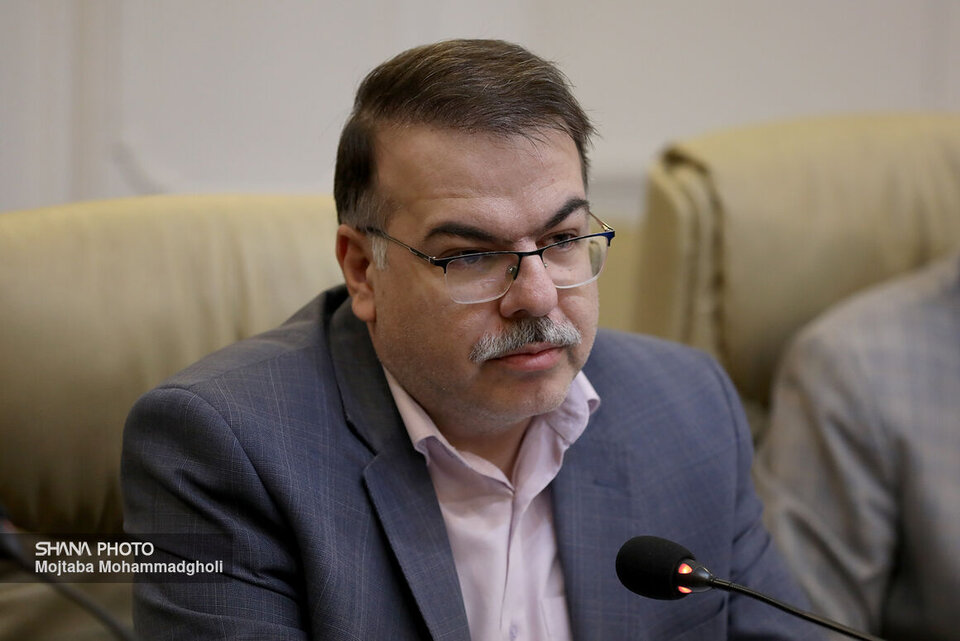Speaking at a specialized meeting on energy policy and renewable energy development during the second Iran Petrochem Conference and Exhibition, Shakeri stated that the gap between production and demand cannot be bridged without the integration of renewable energy and energy optimization.
Shakeri highlighted that the global shift toward transitioning from fossil fuels to clean energy has been underway for years.
He cited International Energy Agency (IEA) projections, which predict accelerated growth in renewable energy in the coming decades, with renewables becoming the primary energy source by 2050, surpassing fossil fuels.
However, Shakeri noted that even as renewables gain a larger share of the global energy mix, oil and gas will still dominate.
"Renewables are not expected to supply all of the world’s energy," he said, underscoring the importance of this reality for Iran, whose economy is heavily reliant on oil and gas.
"We have limited time before oil demand peaks. While we must move toward energy transition, we must also maximize oil and gas production and convert this underground wealth into a productive economy," he added.
Iran’s power plants rely on fossil fuels
Shakeri addressed Iran’s current energy imbalance, attributing it to past energy policies. He pointed out that while 60% of the world’s electricity is generated from fossil fuels, Iran’s figure stands at 92.4%.
"We assumed we had an infinite gas supply, so we based the development of all economic sectors on gas," he explained.
Over the past decade, gas consumption has grown by 5% annually across all sectors. Despite increased production, consumption has consistently outpaced supply, leading to a gas imbalance. This has particularly affected industrial companies during winter shortages.
Gas consumption in power plants equals output of four SP phases
Shakeri revealed that Iran’s power plants consume 90 billion cubic meters of gas annually, equivalent to the output of four phases of the South Pars gas field.
If this electricity were generated from renewables, the gas could be redirected to industrial sectors, creating greater added value for the country.
He also highlighted imbalances in electricity and petroleum products, stressing the need for a comprehensive approach to energy issues rather than a sectoral one.
Gas imbalance could reach 700 mcm without action
Shakeri warned that without investment to boost production, Iran’s gas imbalance, which currently reaches 300 million cubic meters per day in winter, could soar to 700 million cubic meters per day in the coming years.
He echoed the Oil Minister’s recent remarks that investing in pressure-boosting projects in South Pars is critical.
To address the imbalance, Shakeri outlined a four-pronged strategy: increasing gas production through new field developments and pressure-boosting projects in South Pars, quadrupling gas storage capacity (as mandated in the Seventh Development Plan), optimizing energy consumption, and developing renewables. He also emphasized the need for tariff reforms.
Eight-year plan to resolve imbalance requires $104b investment
Shakeri expressed confidence that the gas imbalance could be fully resolved within an eight-year plan, requiring $104 billion in investment, or $13 billion annually.
He stressed that achieving this goal would require coordination across all sectors of the government.
Oil Ministry’s mandates under Seventh Development Plan
Under the Seventh Development Plan, the Oil Ministry is tasked with establishing an oil and gas investment account to fund development projects.
Industrial sectors suffering from gas shortages can also participate in gas field development to secure their feedstock.
Shakeri also highlighted the formation of the Strategic Energy Management Organization, which aims to address previously unmanaged demand and curb uncontrolled consumption.
Renewable energy targets, financial innovations
Shakeri noted that Iran aims to generate 12,000 megawatts of renewable energy, which would create opportunities for energy optimization projects and gas savings.
By the end of the Seventh Development Plan, non-fossil fuel electricity generation is expected to rise from 2.3% to 12% of total power plant capacity.
While this is a positive step, Shakeri acknowledged that global renewable energy capacity in power plants is 60%, indicating the need for further progress.
To achieve renewable energy targets, Shakeri called for innovative financing models, such as green electricity boards.
He also mentioned the Oil Ministry’s recent focus on renewable energy investments within oil and gas field development contracts, expressing hope that these mechanisms would attract more investors to the sector.
Significant savings expected
Shakeri concluded that achieving these goals would require substantial effort and financial resources but projected savings of 1.285 million barrels by the end of the plan, a significant figure for the country.


Your Comment